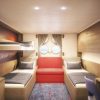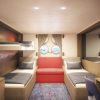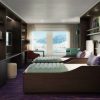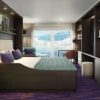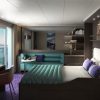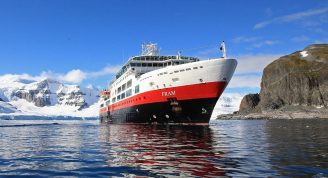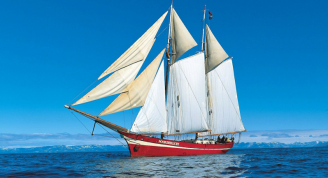Description
From fjords to straits to the mighty Monaco Glacier, this scenic and wildlife-centered Arctic voyage explores some of the most dramatic landscapes and animal-viewing hotspots Svalbard has to offer. Between your visits to glaciers, beaches, and berg-strewn bays, you might encounter polar bears, walruses, whales, seals, foxes, and flocks of exotic seabirds.
Summer Solstice:
The midnight sun is a natural phenomenon that occurs in the summer months. The sun is visible for the full duration of 24 hours, given fair weather. June Solstice ( Summer Solstice) is on Monday, 21 June 2021, 05:32 in Longyearbyen. “Solstice” (Latin: “solstitium”) means sun-stopping. The point on the horizon where the sun appears to rise and set, stops and reverses direction after this day. On the solstice, the sun does not rise precisely in the east, but rises to the north of east and sets to the north of west, meaning it’s visible in the sky for a longer period of time. It won´t be before late August that the sun will go down for a few minutes. Experience Summer Solstice during voyage HDS05 when the the midnight sun has its highest position above the Northern horizon in Spitsbergen.
Arc of Meridian: –
The Earth is flattened towards the Poles. In the 19th century astronomers were aware of it and they began to organise expeditions into the Arctic in order to measure this flattening from the northernmost lands. We will pay attention to some of their measure points in Northeast Spitsbergen on day 3 and day 7 as mentioned in the above itinerary.
Edward Sabine had an observatory in 1823 on Indre Norskøya at Sabinehaugen. He used a Pendulum to measure gravity, and suggested measurements of meridians (lines of longitude through the poles) in Spitsbergen. Eventually, at the end of the 19th century, the Swedish–Russian Arc of Meridian Expeditions were carried out. Their measurements required a chain of triangulation points. The chain reached from Crozierpynten and Vesle Tavleøya in the north to Keilhaufjellet in the south. The measurements defined the increasing flattening of the Earth toward the Poles. Most cairns along the chain can still be seen today.



